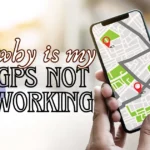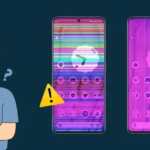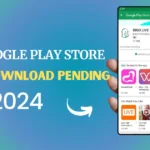Bluetooth Pairing Problems: Quick Fixes for Common Issues
Description

Have you ever wondered why your Bluetooth connection plays hide and seek when you need it the most?
Bluetooth pairing problems can turn a smooth digital experience into a frustrating puzzle. From the inability to find devices to frequent disconnections, the reasons behind these issues often lie in compatibility, interference, and outdated software.
We’ll explore practical steps to troubleshoot and resolve common Bluetooth pairing problems, freeing your devices from the invisible tangle of wireless miscommunications.
Whether you’re facing challenges with your iPhone, Mazda 3, or even syncing up to your Subaru Forester, the solutions outlined here aim to restore harmony to your digital ecosystem.
Table of Contents
Why Is My Bluetooth Not Pairing?
Have you ever faced the frustration of your Bluetooth device not pairing?
This issue is caused by common errors such as devices being too far apart, Bluetooth being disabled, or interference from other devices.
Quick Solutions to Bluetooth Pairing Issues
- Ensure Proximity and Bluetooth Activation:
- Make sure both devices are close enough to each other, typically within a few feet.
- Confirm that Bluetooth is activated on both devices.
- Restart and Reset:
- Power off the Bluetooth accessory and turn it back on.
- Restart your smartphone or tablet to refresh the connection settings.
- Check Power Levels and Connection Settings:
- Ensure the accessory is fully charged or connected to power.
- For accessories using apps, verify that Bluetooth permissions are enabled under Settings > Privacy & Security > Bluetooth.
- Re-Pair the Devices:
- Unpair the device and put it back into discovery mode.
- Attempt to pair again to establish a fresh connection.
- Manage Device Interference:
- Move away from Wi-Fi routers, USB 3.0 ports, and other smart home devices that might cause interference.
- Update and Maintain:
- Check for firmware updates for your devices.
- Remove old Bluetooth connections that are no longer needed.
Ensuring Compatibility and Updating Drivers
- Verify that your accessory is compatible with your iOS or Android device by consulting the manufacturer’s specifications.
- If the accessory pairs with other devices but not yours, unpair it from other devices and try again.
- Update the device’s software and Bluetooth drivers to ensure optimal performance and compatibility.
By following these steps, you can resolve most Bluetooth pairing issues and enjoy a seamless connection between your devices.
Why Does My Bluetooth Pair But Not Connect?

This frustrating issue can often be traced back to a few common problems, such as interference from other devices, incorrect settings, or outdated software.
Simple Fixes to Resolve Bluetooth Connection Issues
- Check Device Proximity and Interference:
- Ensure that no physical obstacles or electronic devices are interfering with the Bluetooth signal.
- Keep both devices within a close range, ideally less than 20 feet apart without any barriers.
- Verify Bluetooth and Device Settings:
- Swipe down from the top of your device screen to check if the Bluetooth icon is active.
- Navigate to “Settings” > “Connections” to ensure Bluetooth is enabled and select the desired device under “Available devices”.
- Refresh Connection Settings:
- Turn Bluetooth off and then back on to reset the connection.
- Restart both devices to clear any temporary glitches affecting Bluetooth functions.
- Update Software and Drivers:
- Ensure your device’s operating system and the Bluetooth device’s firmware are up to date.
- If using a PC, update Bluetooth drivers by navigating to “Device Manager”, right-clicking on the Bluetooth device, and selecting “Update driver”.
- Re-establish the Pairing:
- Forget the Bluetooth device in your settings and rediscover it as if connecting for the first time.
- Check for the pairing request and enter the passcode if required (common codes are
0000or1234).
- Adjust Audio and Call Settings:
- Ensure that ‘Media audio’ and ‘Phone audio’ settings are enabled for the connected device.
- Increase the volume on both the Bluetooth device and your smartphone or computer to check if the audio is being directed correctly.
By following these steps, you can address the common causes behind Bluetooth pairing without connecting issues.
How to fix Bluetooth not pairing
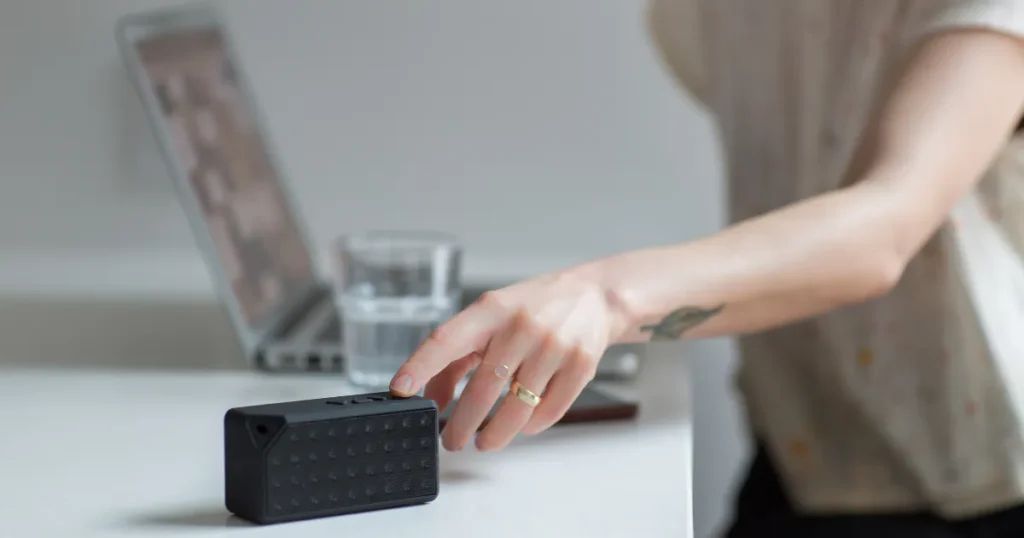
Identifying the Problem
Why is your Bluetooth not pairing?
This could be due to several reasons such as devices not being discoverable, Bluetooth being turned off, or devices being out of range. Identifying the correct issue is the first step in resolving Bluetooth pairing problems.
Implementing Solutions
To solve Bluetooth pairing issues, follow these steps:
- Ensure Bluetooth is Enabled:
- Check both devices to confirm that Bluetooth is turned on. You can usually find this setting in the ‘Connections’ or ‘Bluetooth’ menu of your device.
- Set Devices to Discoverable Mode:
- Make sure both the Bluetooth device and the receiving device are set to discoverable mode. Refer to the device’s manual for specific instructions on how to enable this mode.
- Bring Devices Closer:
- Reduce the distance between the two devices. Ideally, they should be within 5 feet of each other to ensure a strong connection.
- Restart Devices:
- Sometimes, simply restarting both devices can resolve connectivity issues. This refreshes the system and can eliminate temporary glitches.
- Remove Old Pairings:
- Navigate to the Bluetooth settings and remove any outdated or unused connections. This can prevent conflicts that might be causing the pairing issues.
- Update Software and Drivers:
- Ensure that both devices are running on the latest software. Additionally, update the Bluetooth drivers on your devices, especially if you are using a computer or a smartphone.
By following the outlined steps, you should be able to establish a stable connection between your devices.
01. Ensure Bluetooth is Enabled on Both Devices
Are You Struggling with Bluetooth Pairing Problems?
Have you ever encountered an issue where your devices just won’t pair via Bluetooth?
The first and most crucial step to troubleshoot this is ensuring Bluetooth is activated on both devices. This might sound simple, but it’s often overlooked in the rush to connect devices.
Steps to Enable Bluetooth on Various Devices
- For Windows PCs:
- Click the Network icon on the taskbar.
- Choose the Bluetooth quick setting to toggle it On or Off.
- Alternatively, go to Start > Settings > Bluetooth & devices to adjust the Bluetooth settings.
- For Android Devices:
- Swipe down from the top of the screen to access the quick settings.
- Tap the Bluetooth icon to turn it on. If it’s not visible, you might need to swipe left to see more icons.
- For iOS Devices:
- Open Settings from your device’s home screen.
- Scroll to and tap on Bluetooth.
- Toggle the Bluetooth switch to On.
Ensuring a Successful Connection
By following these steps, you can ensure that Bluetooth functionality is enabled on your devices, paving the way for a successful pairing.
Remember, both devices need to have Bluetooth turned on and be within the recommended range (typically a few feet without obstacles) to connect properly.
This simple check can save you time and frustration with Bluetooth pairing problems.
02. Bring Devices into Pairing Mode and Range
Initiating Pairing Mode: A Key Step in Bluetooth Connectivity
Are you struggling to get your devices to pair via Bluetooth?
The key might lie in correctly setting your devices to pairing mode. Ensuring that both your devices are ready to connect is crucial for a successful Bluetooth pairing.
Step-by-Step Guide to Activate Pairing Mode
- Access Bluetooth Settings:
- Navigate to “Settings” on your device.
- Tap on “Connections” or a similar option, depending on your device.
- Enable Bluetooth:
- Ensure that Bluetooth is turned on. There should be an indicator that shows Bluetooth is active.
- Enter Pairing Mode:
- Select ‘Bluetooth’ from the connections menu. Look for an option like ‘Pair new device’ or ‘Add device’.
- Your device will start searching for other devices that are in pairing mode within range.
- Select the Device to Pair With:
- A list of available devices will appear under “Available devices.”
- Choose the device you wish to pair with from the list.
By following these instructions, you can set your devices into the correct mode and range for pairing. This simple yet crucial step helps in establishing a stable and reliable Bluetooth connection.
03. Restart Devices and Clear Bluetooth Cache
Restarting Your Devices
Have you ever found that your devices seem to refuse to connect via Bluetooth, despite multiple attempts?
Restarting both devices can often resolve these connectivity issues.
This simple step refreshes the system and clears minor glitches that might be preventing successful pairing.
- Power Off Your Device: Turn off your smartphone, tablet, or any other Bluetooth-enabled device.
- Restart Your Vehicle or Accessory: If you are trying to connect to a car or any Bluetooth accessory, power it down completely and then turn it back on.
- Reattempt Pairing: Once both devices are back on, attempt to pair them again by placing them in close proximity.
Clearing Bluetooth Cache on Android
Clearing the Bluetooth cache on your Android device can also help fix pairing problems, especially if you’re experiencing frequent disconnections. Here’s how you can clear the Bluetooth cache:
- Go to Settings: On your Android device, open the Settings app.
- Navigate to Apps & Notifications: Tap on “Apps” or “Applications” depending on your device.
- Show System Apps: Tap on the three dots or “More” option and select “Show system apps”.
- Find and Select Bluetooth: Scroll through the list of apps until you find Bluetooth, then tap on it.
- Clear Cache: Tap on “Storage”, then “Clear Cache”. For some devices, you might need to go into “Manage Storage” first.
Reconnecting After Cache Clearance
After clearing the cache, restart your device to apply changes. Try pairing your device again.
If you were trying to connect to a specific app or service, such as a gate control or a smart home device, ensure the app is updated and set up correctly to accept new Bluetooth connections.
By following these steps, you can solve most Bluetooth pairing problems, ensuring your devices communicate seamlessly.
Remember, these solutions are particularly effective for Android users, as iOS devices do not allow clearing Bluetooth cache in the same way.
04. Update Device Software and Bluetooth Drivers
Are Your Devices Up-to-Date?
Are you still facing Bluetooth pairing problems even after trying basic troubleshooting steps?
Often, the issue might be due to outdated software or Bluetooth drivers that need an upgrade. Keeping your device’s software and Bluetooth drivers current is crucial for ensuring compatibility and smooth connectivity.
Steps to Update Your Device and Bluetooth Drivers
- Check for Software Updates:
- For smartphones and tablets, go to “Settings,” then “System,” and select “Software update” to check if any updates are available.
- For PCs, access “Settings,” go to “Update & Security,” and click on “Windows Update” to see if there are new updates for your system.
- Update Wearable and Bluetooth Device Software:
- Ensure that any connected wearable apps or Bluetooth peripheral devices are updated. Check the specific app associated with the device for updates.
- Update Bluetooth Drivers on PC:
- On Windows, open “Device Manager,” locate “Bluetooth,” right-click the Bluetooth adapter, and select “Update driver.”
- For Macs, updates are generally handled with system updates, so check “System Preferences” under “Software Update.”
Ensuring Optimal Performance
By following these steps, you should be able to resolve most Bluetooth connectivity issues related to outdated software and drivers.
Regular updates not only enhance security but also improve the functionality and compatibility of your devices with various Bluetooth peripherals.
Remember, maintaining up-to-date software is key to a hassle-free Bluetooth experience.
Also Read: How to fix Android App Not Responding Issues Quickly 2024
Samsung tv bluetooth pairing problems
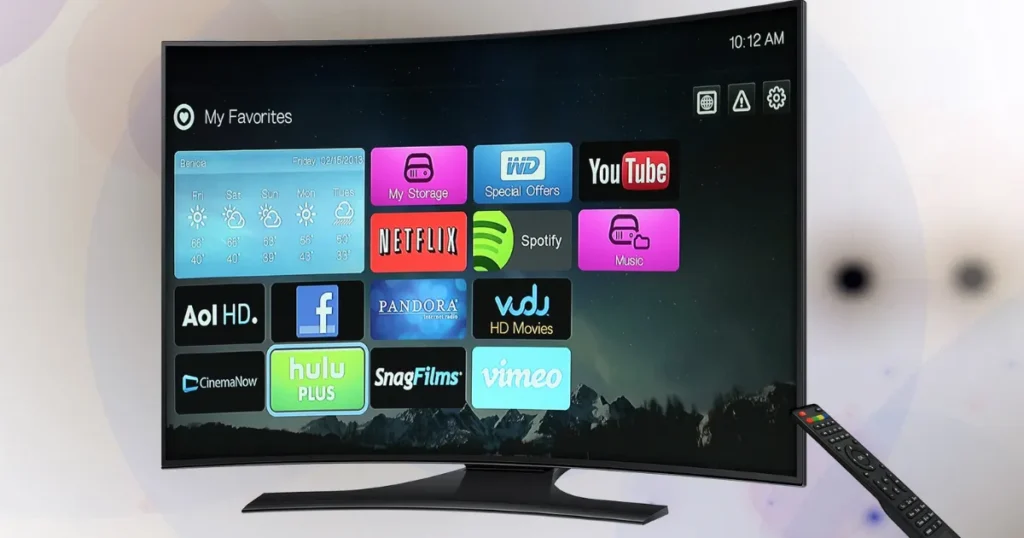
Troubleshooting Samsung TV Bluetooth Pairing Issues
Are you encountering Bluetooth pairing problems with your Samsung TV?
Common issues may include devices not being detected, no sound output, or frequent disconnections. Here’s how you can resolve these challenges effectively:
- Check Network Security Settings:
- Sometimes, network security settings can block Bluetooth connections. Ensure that your TV’s network settings permit Bluetooth pairing.
- Power Cycle Your TV:
- Unplug your Samsung TV while it’s on, wait for 30 seconds, and then plug it back in. This can often reset the system and solve connectivity issues.
- Update Your Devices:
- Ensure that both your Samsung TV and Bluetooth device are updated to the latest firmware. Go to ‘Settings’ > ‘Support’ > ‘Software Update’ on your TV.
- Clear and Reset Connections:
- Navigate to ‘Settings’ > ‘Sound’ > ‘Sound Output’ in your TV’s menu. Remove the previously connected Bluetooth devices and try pairing again.
- If issues persist, perform a factory reset of your Bluetooth device and attempt to reconnect.
- Adjust Audio Settings:
- After connecting, switch the sound output manually via the Smart Hub to ensure the audio is transmitted through the correct device.
- Check Device Compatibility and Permissions:
- Confirm that your Bluetooth device is compatible with your Samsung TV model. Visit Samsung’s official website or consult your user manual for compatibility information.
- Go to ‘Device Connection Manager’ in your TV settings to verify that no permissions are denied for the Bluetooth device.
- Use the SmartThings App:
- For additional functionality, use the Samsung SmartThings app to connect Bluetooth devices. Ensure your phone and the app are updated to the latest versions.
By following these steps, you should be able to resolve most Bluetooth pairing problems with your Samsung TV.
If the issue persists, consider contacting Samsung support for further assistance or visit a service center if you suspect hardware issues.
Subaru bluetooth pairing problems

Are You Experiencing Bluetooth Pairing Issues with Your Subaru?
If you’re struggling with Bluetooth pairing problems in your Subaru, you’re not alone. Many Subaru owners face challenges ranging from devices not being detected to frequent disconnections.
What causes these frustrating issues?
It’s a matter of compatibility, incorrect settings, or even obstructions between your device and the vehicle.
Step-by-Step Solutions to Resolve Subaru Bluetooth Pairing Problems
- Check Compatibility:
- Ensure that your Bluetooth device supports the Hands-Free Profile (HFP) or Audio Profile (A2DP) which are typically compatible with Subaru’s system.
- Reset Connections:
- Clear previous pairing records from both your device and the Subaru infotainment system. This can often resolve connection issues.
- Update Infotainment Software:
- Check for updates for your Subaru’s infotainment system which can fix bugs and enhance compatibility.
- Adjust Device Settings:
- Confirm that your device is in discoverable mode and the Bluetooth settings are correctly configured to pair.
- Inspect Vehicle Hardware:
- Check for any physical damage to the Bluetooth antenna or the infotainment system that might be affecting connectivity.
- Specific Steps for Different Model Years:
- For 2015-2016 models: Press the ‘Phone’ button, select ‘Add Device’, and follow on-screen prompts.
- For 2017-2021 models: Press the ‘Phone’ button, choose ‘Bluetooth’, and then ‘Add Device’.
Lexus rx 350 bluetooth pairing problems

Experiencing Issues with Your Lexus RX 350 Bluetooth Pairing?
Are you struggling with Bluetooth pairing problems in your Lexus RX 350?
Common issues such as devices not being detected or frequent disconnections can often be traced back to phone software updates, unreliable radio signals, or interference from other Bluetooth-enabled devices.
Step-by-Step Solutions to Enhance Bluetooth Connectivity
- Remove Interfering Devices:
- Clear the area of any unnecessary Bluetooth-enabled devices that might be causing interference with your Lexus RX 350.
- Reset Bluetooth Connections:
- Manually delete the phone from your Lexus’s Bluetooth memory. Press the ‘Phone’ button on the navigation screen, select ‘Bluetooth’, then ‘Delete Device’, and choose the device you wish to remove.
- After removal, set up the connection anew by pressing ‘Add Device’ and follow the on-screen instructions to pair your device again.
- Check for Software Interferences:
- Consider any recent app downloads or updates on your phone that may be affecting the Bluetooth connectivity. Remove or disable these if necessary.
- Compatibility Checks:
- Ensure that the devices you are trying to connect are compatible with your Lexus car Bluetooth system to prevent connectivity issues.
- Local Dealership Support:
- If troubleshooting does not resolve the issues, contact your local Lexus dealership or a car service center for professional assistance.
Optimizing Device Settings for Seamless Connectivity
- Enable Text Notifications: After pairing, go to ‘Information’ > ‘Show notifications’ on your Lexus to ensure you receive text alerts through the car’s system.
- Adjust Volume Settings: Verify and adjust the Bluetooth connection and volume settings on both your device and the Lexus RX 350 to ensure optimal audio performance. Remember, different apps may have individual volume controls.
Mazda bluetooth pairing problems
Are You Facing Issues with Your Mazda’s Bluetooth System?
Do you find yourself grappling with Bluetooth pairing problems in your Mazda?
Various issues can arise, such as incompatible mobile devices or connections that drop unexpectedly.
These problems might stem from software updates on your mobile device or issues within the car’s Bluetooth kit.
Effective Solutions to Tackle Mazda Bluetooth Issues
- Check Device Compatibility:
- Verify if your mobile device is compatible with Mazda’s Bluetooth system. Incompatibility can often lead to pairing failures.
- Software and Firmware Updates:
- Update the software on your mobile device and check for firmware updates on your Mazda’s infotainment system. These updates can resolve existing bugs that cause connectivity issues.
- Reset Bluetooth Connections:
- If your Mazda’s battery has died recently, the Bluetooth settings might revert to default. Reset these settings in your car and on your mobile device to re-establish the connection.
- Clear Cache and Re-pair:
- For persistent problems, clear the Bluetooth cache on your mobile device and perform the pairing process again. This can often resolve issues related to outdated cache data.
- Consult Mazda Support:
- If the issue persists, consider taking your vehicle to a Mazda dealership. They can provide professional assistance and check for any defects in the Bluetooth unit.
BMW bluetooth pairing problems
Are You Facing Bluetooth Pairing Problems with Your BMW?
Have you ever wondered why your BMW’s Bluetooth system might not be pairing or functioning correctly?
Common issues such as not detecting devices, frequent disconnections, or poor audio quality can often be frustrating. But worry not, as these problems are typically solvable with a few adjustments and updates.
Step-by-Step Solutions to Resolve BMW Bluetooth Pairing Issues
- Initial Checks:
- Ensure your smartphone is playing music or audio when not connected to Bluetooth to rule out device-specific audio issues.
- Verify that your iDrive settings allow audio streaming and Bluetooth telephony for your device.
- Connection Management:
- Disconnect any other devices that might be trying to connect simultaneously unless your model supports enhanced Bluetooth, which allows multiple connections.
- Turn off WiFi on your smartphone if it’s interfering with the Bluetooth connection.
- Software and Device Updates:
- Install the latest updates available for your BMW’s Bluetooth system and your smartphone to ensure compatibility and fix bugs.
- Update your Bluetooth software on both your phone and iDrive system.
- Reset and Re-pair:
- Reset the BMW Bluetooth by deleting the device from your iDrive’s communication menu and forgetting the device on your phone.
- Pair your phone and BMW again, ensuring the correct PIN code is used (commonly “1234” or “0000”).
- Handling Interferences:
- Check the installation of the microphone; it should face the speaker and be away from noise sources.
- Remove or turn off other nearby Bluetooth devices or electronic equipment that may cause interference.
- Advanced Troubleshooting:
- If your device uses an older AVRCP version, consider updating your phone.
- For persistent issues, consider resetting the BMW audio system as per the vehicle’s user manual or contact BMW customer support for further assistance.
Denon bluetooth pairing problems
Troubleshooting Denon Bluetooth Pairing Issues
Are you struggling with Bluetooth pairing problems on your Denon audio system?
Issues such as inability to find devices or frequent disconnections can be common but are generally solvable with a few troubleshooting steps.
Quick Fixes for Common Denon Bluetooth Issues
- Ensure Bluetooth Activation:
- Confirm that Bluetooth is activated on your Denon receiver. If it was selected during initial setup, it should automatically be on. Otherwise, hold the Bluetooth button down for 3 seconds to start the device search.
- Select the Correct Device:
- From your mobile or other Bluetooth devices, select the AVR model name listed and press ‘Connect’. Ensure you are choosing the right device to avoid connectivity issues.
- Address Signal Interference:
- Keep your Denon receiver away from other wireless devices to minimize interference. Ensure no physical objects are blocking the signal path between your receiver and the Bluetooth device.
- Manage Multiple Connections:
- Ensure no other devices are trying to pair with your receiver simultaneously. Disconnect any unrelated devices to prevent connection conflicts.
- Update Software:
- Regularly check for firmware updates for your Denon receiver. Updates can resolve many bugs and enhance Bluetooth connectivity. These updates can be performed easily using your remote control.
- Reset Connections:
- If problems persist, consider deleting previous products from your receiver’s memory and reinstalling them. This can help eliminate bugs that may have occurred during the last disconnection.
- Power Cycling and Resets:
- Perform a soft reset by turning off the power at the mains and then turning it back on. For more persistent issues, a hard reset, which restores factory settings, might be necessary.
FAQs
Q: What steps should I take to resolve a Bluetooth pairing issue?
If you’re having trouble pairing with Bluetooth accessories, follow these steps:
- Open your phone’s Settings app.
- Tap on “Connected devices.” If there’s a “Bluetooth” option, select it.
- Choose “Pair new device” and select your accessory’s name from the list.
Q: How can I improve a weak Bluetooth connection?
To enhance a poor Bluetooth connection, clear the Bluetooth app’s cache by doing the following:
- Go to Settings > Apps > Bluetooth.
- Select Storage and then Clear Cache (note that the exact wording may differ depending on your Android device).
- Restart your phone after clearing the cache.
Q: What causes Bluetooth to have difficulty connecting?
Bluetooth often struggles with connections because it operates on the 2.4GHz frequency band. This is the same band used by WiFi, which is generally more powerful. As a result, Bluetooth signals can only be transmitted during the brief intervals between WiFi transmissions.
Q: Is there a way to force a Bluetooth device to pair?
To force a Bluetooth pairing on an Android device, follow these instructions:
- Navigate to Android -> Advanced Restrictions -> Allow Network Settings in your device settings.
- Activate the “Force Bluetooth” option.
For more detailed information on Android device restrictions, refer to the provided link or documentation.
Conclusion
Throughout this exploration of Bluetooth pairing problems, we’ve delved into the complexities and solutions across a spectrum of devices—from cars to smartphones, and even to your home audio systems.
We’ve provided a comprehensive guide to pinpoint and solve these Bluetooth pairing problems, firmly believing in the ability to enhance your device’s connectivity.
Remember, a stable and reliable Bluetooth connection is not just a possibility—it’s a promise we can help you keep.

